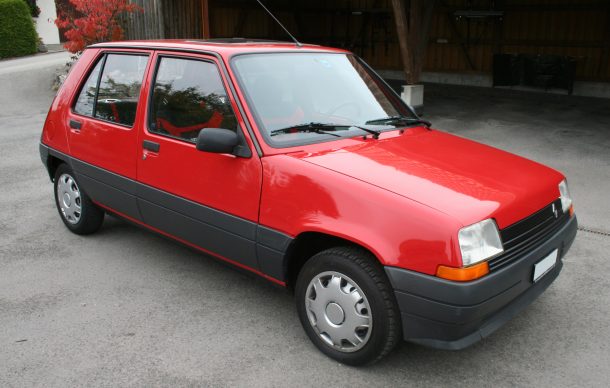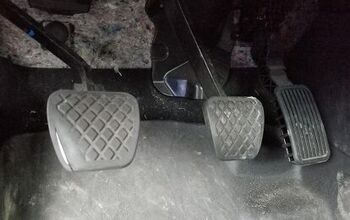Ask Jack: Can We Flip the FWD Script?

The late Janet Reno once described herself thusly: “The fact is I’m just an awkward old maid with a very great affection for men.” Similarly, I think of myself as a liberal-arts type with a very great affection for engineering. I’ve designed a few bicycles in my time, and I’ve earned most of my bread by programming in various languages, but I’m not qualified to draw a bridge, create a capacitor, or invent an engine. Those are special and particular disciplines that attract special and particular people. I ain’t one of them.
Nevertheless, even as an outsider it seems plain to me that there are two kinds of automotive engineering: the inventive kind, as practiced by Henry Ford and Colin Chapman, and the iterative kind as practiced by the vast majority of engineers currently working in the business. When Jim Hall put a wing on the Chaparral, he was doing inventive engineering; when the Mercedes F1 team runs through ten thousand CFD calculation sequences to remove crosswind drag by 0.5 percent, that’s iterative engineering.
Inventive engineering gets the headlines, but iterative engineering pays the bills. Which leads me to today’s question, which asks? Can’t we be inventive when it comes to front-wheel drive?
Maybe you can answer a question for me that I haven’t been able to figure out:
Why in a transverse FWD setup is the engine hung out in front of the wheels?
Every auto journo (with good reason) complains about two things in a FWD car — the proportions (huge front overhang) and the weight balance (huge front end bias). In a longitudinal setup I get it (easier to run the front half shafts directly off the transmission) but can’t figure out why it needs to be that way in a transverse setup. Why can’t the “drive unit” (engine, transmission, half shafts, front wheels) just be rotated 180 degrees in place? I can’t see that it would affect packaging (same stuff in the same space) which is the big reason to go FWD transverse. Is it a crashworthiness thing? Is it a cost thing?
I think the reductive answer to this is, “It wouldn’t fit.” Take a look at any FWD car from the side. Measure the distance from the center of the wheel to the other side of the engine. Then look at what that same measurement gets you if you face it the other way — you’re well into the passenger compartment. As someone who races a FWD car and therefore has the hood up on it all the time, I can tell you that there isn’t actually a lot of space between the back of a transverse engine and the firewall.
“Ah,” the inventive engineer replies, “then we move the front wheels forward, the way they were on, say, a BMW E36!” You could also lengthen the nose, Zimmer Quicksilver style. It’s certainly possible to flip the engine around if you have that kind of room.
The iterative engineer will point out that doing so leads to all sorts of problems. In order to pass a modern crash, the engine has to “submarine” a bit in a front-end impact. This is easily engineered with a systeme Panhard car, like a RWD Bimmer, and it’s been figured out with conventional transverse FWD cars. But an FWD car with the engine hard up against the firewall? Tougher to do.
There’s also the minor matter of servicing the thing, which would be a nightmare even with a Saab-style reversed hood. Getting the air in and out of the engine will be frustrating, which doesn’t mesh well with the idea of a flopped-front-driver as a performance car. There are a thousand iterative challenges to solve with this idea.
Last but not least, there’s the fact that if you’re going to put this much effort into engineering a unique platform for an FWD performance car, you might as well do an RWD performance car! So I think it’s safe to say that nobody is going to waste their inventive time and iterative effort into doing an FWD car with the engine behind the front wheels.
Except, of course, for the fact that it’s been done.
The first-generation Renault 5, known as “Le Car” in the USA, had a longitudinal FWD setup much like the Audi 80 aka “Fox” that appeared next to it in 1972. But the better mousetrap had already been invented by Sir Alec Issigonis; the transverse-engined Mini was an authentic revolution compared to the Renault and Audi which were merely Thirties FWD designs in square bodies.
Renault’s second-generation 5, known as “Supercinq” in France but never sold in the USA, utilized a transverse engine placed behind the transmission. Euro-snobs will recall that the Renault 5 was also available as a mid-engined RWD car, making for three separate and distinct layouts in what was more or less the same body.
And we could end the story here, except that the “Supercinq” actually took its layout from the Renault 11, which we know as the Encore/Alliance. Yup, the AMC/Renaults also had their engines mounted against the firewall. The performance model of the Alliance was the Renault GTA.
So now we have the real answer to the question posed by James, and it goes like this: Sure you can do it! But nobody’s gonna buy it.

More by Jack Baruth
Latest Car Reviews
Read moreLatest Product Reviews
Read moreRecent Comments
- ToolGuy I am slashing my food budget by 1%.
- ToolGuy TG grows skeptical about his government protecting him from bad decisions.
- Calrson Fan Jeff - Agree with what you said. I think currently an EV pick-up could work in a commercial/fleet application. As someone on this site stated, w/current tech. battery vehicles just do not scale well. EBFlex - No one wanted to hate the Cyber Truck more than me but I can't ignore all the new technology and innovative thinking that went into it. There is a lot I like about it. GM, Ford & Ram should incorporate some it's design cues into their ICE trucks.
- Michael S6 Very confusing if the move is permanent or temporary.
- Jrhurren Worked in Detroit 18 years, live 20 minutes away. Ren Cen is a gem, but a very terrible design inside. I’m surprised GM stuck it out as long as they did there.


































Comments
Join the conversation
Sorry jack, but as a super5 owner, i can confirm that the engine is indeed mounted slightly in front of the wheel centerline. (how do you post pictures on this site?) http://i325.photobucket.com/albums/k368/bjarnetv/IMG_0417_zpswmtobrsx.jpg
What exactly makes Henry Ford inventive as opposed to iterative?